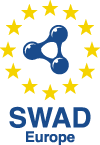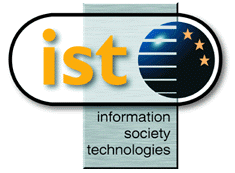


W3C's Semantic Web technology stack is an integrated set of technologies to improve the reuse of information on the web. The SWAD-Europe (Semantic Web Advanced Development in Europe) project aims to support W3C's Semantic Web initiative in Europe, providing targeted research, demonstrations and outreach to ensure Semantic Web technologies move into the mainstream of networked computing.
SWAD-Europe is an unusual project: a mixture of research into fundamental Semantic Web technologies, evocative and well-documented demonstrators showing how Semantic Web technologies can be used, input into the appropriate W3C standards work, and community building: the creation and use of fora and documentation to help developers in the field.
In these diverse ways, the project supports W3C's Semantic Web work. The breadth and generality of the Semantic Web vision means that Semantic Web applications are potentially many and varied. SWAD-Europe is explicitly designed to manage risk in this rapidly changing environment, by focusing on a number of key technologies (for example query and storage of Semantic Web data, relationship between XML and RDF, RDF and Web Services), and a number of different applications (for example Semantic Blogging, Semantic Portals, Thesauri, Calendaring and Image annotation).
In this period three key areas are particularly worthy of emphasis:
As we move into the last six months of the project, work will focus on dissemination and exploitation. Four workshops are planned in this period, including the project's final workshop on FOAF, social software and the Semantic Web. Input into the W3C's new Data Access and Semantic Web Best Practices working groups will continue.
A weblog ('blog') is a piece of software enabling easy publishing of diary-like short articles to the web. Weblogs are very popular, as are various search engines utilizing the syndication of weblog content using the RSS syndication standard.
The Semantic Blogging demonstrator is a carefully researched demonstrator showing both how semantic content can be incorporated into weblogs, and conversely how weblogs can be enhanced with semantic information. The demonstrator shows how bibliographic information can be appended to weblog entries about papers or books, although the technique is generalizable to other types of object.
Thesauri are an important component of digital libraries and provide a way to connect the real words people use to describe things to carefully structured ontologies. They can therefore be used as a useful user interface component for classifying objects.
SWAD-Europe's work in this area has resulted in a strong and diverse community around the creation of the SKOS (Simple Knowledge Organisation Systems) RDF vocabulary for thesauri. Work includes an RDF schema for SKOS, a demonstrator showing remote access to thesauri using Web Services technologies, and documentation to help the conversion of legacy thesauri to this format. This work is being taken forward within the W3C semantic Web Best Practices and Deployment working group.
A major strand running through the project has been research and software development about the fundamental questions of how to store and retrieve data stored in RDF. A workshop was held on scalability and storage, which also touched on query; and this, reports and implementations of APIs and Query for RDF, and informal work on testcases for RDF query have all fed into the scope and work of the new W3C Data Access working group.
SWAD-Europe's key users are developers, in four basic groups: academic, content creators, commercial and Open Source developers. By analysing attendance at workshops and membership of mailing lists, we have directly reached members of these groups in approximately the following proportions:


This relatively small sample size of direct access is greatly widened by the use of the project weblog, which is syndicated to many sources, and the Semantic Blogging demonstrator, which has attracted attention both from the media (the Guardian, New Scientist) and the wider weblogging community.
SWAD-Europe has worked closely with W3C's Semantic Web Interest Group to answer frequently asked questions in various community fora and to help build a friendly, useful and self-sustaining community of developers on the mailing lists, Internet Relay Chat rooms and wiki (collaborative authoring environment).
Our success depends on the goodwill of the community, and so we have distributed 200 t-shirts as rewards and encouragement, and to promote the project to developers in this area, with the following design on the front:
and the SWAD-Europe name and logo on the back.
SWAD-Europe project participants have presented papers at XML 2003, XMLEurope 2004 and posters at WWW2004 and the European Semantic Web Symposium. We have run several workshops, and presented at numerous smaller events, including presentations in four European languages.
The SWAD-Europe homepage contains links to reports and presentations by members of the project, and more detail about these and other dissemination activities is available in the Dissemination and use plan. The Semantic Blogging report and demonstrator are both available.
Thesaurus work in SWAD-Europe has its own sub-site with links to the relevant reports, the SKOS schema guide and other reports and work in this area.
The Workshop on Scalability and Storage was held in Amsterdam in November 2003, and is described in a report. The W3C's Data Access and Semantic Web Best Practices and Deployment working groups have their own homepages, as does the Semantic Web Interest Group.
SWAD-Europe's final workshop call for papers is available: Friend of a Friend, Social Networking and the (Semantic) Web.
Future work includes research and implementation of a difficult but useful and practical and area: trust and the Semantic Web. A further demonstrator, Semantic portals, will also be made available in this final period. Four workshops will be help before the end of the project: Metadata and Semantic Web issues in a multilingual context (Copenhagen), Thesauri (Bath), RDF and OWL as systems glue (Brussels), and the final workshop: FOAF and social software (in Galway, in collaboration with DERI).






Last modified 2004-06-22